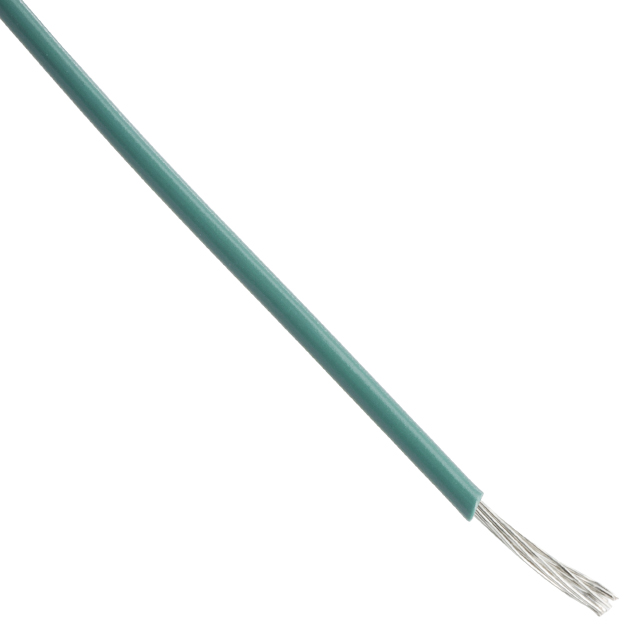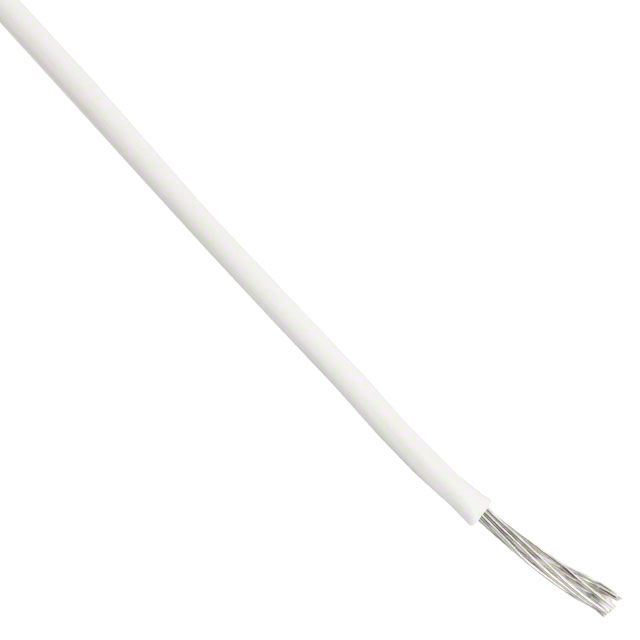
Does a Resistor Reduce Voltage?
Global electronic component supplier ERSAELECTRONICS: Rich inventory for one-stop shopping. Inquire easily, and receive fast, customized solutions and quotes.
Resistors are essential parts of electronic circuits, yet it's not always evident how they lower voltage. Effective circuit design and analysis necessitate a grasp of resistor behavior. Despite not actively lowering voltage like transformers or voltage regulators do, resistors play a crucial function in current management and voltage division.
In this post, we will examine using resistors to reduce voltage. This section will cover the numerous methods for reducing voltage in real-world applications as well as the concepts underlying voltage drop. This article explains whether or not resistors in electronic circuits reduce voltage. So continue reading until the end of the post to get all the answers you need!

How Does a Resistor Reduce Voltage?
A resistor reduces voltage by creating a voltage drop across its terminals. This voltage drop is caused by the resistance to the flow of electric current through the resistor. The amount of voltage drop depends on the resistance value and the current flowing through the resistor, as described by Ohm's law:
V=I*R
Where: V is the voltage drop across the resistor; I is the current flowing through the resistor; R is the resistance value.
When current flows through a resistor, the resistor opposes the flow of electrons, causing them to lose some of their energy in the form of heat. This energy loss results in a lower voltage at the output side of the resistor compared to the input side.
Some key points about how a resistor reduces voltage:
- The current remains the same on both sides of the resistor, but the voltage decreases as the current flows through the resistance.
- Using a resistor to drop voltage is an inefficient method compared to using a voltage regulator or transformer, but it is a simple and inexpensive way to control voltage in a circuit.
- Resistors can be used in series as a voltage divider to reduce a voltage to a desired level.
- The voltage drop across a resistor is not caused by the resistor itself but by the resistance to current flow which results in energy loss.
- So in summary, a resistor reduces voltage by creating a voltage drop proportional to the resistance and current, as the resistor dissipates some of the energy of the electrons flowing through it.
Key Parameters Of A Resistor
Resistors are fundamental components in electrical circuits, serving to limit current flow and create voltage drops. Understanding their key parameters is essential for effective circuit design and application. Here are the primary parameters that characterize resistors:

1. Resistance (R)
Definition: The resistance of a resistor is its primary parameter, measured in ohms (Ω). It quantifies how much the resistor impedes the flow of electric current.
Formula: According to Ohm's Law, the relationship between voltage (V), current (I), and resistance (R) is given by:
V = I*R
2. Power Rating (P)
Definition: This parameter indicates the maximum power a resistor can dissipate without overheating, measured in watts (W). Exceeding this rating can damage the resistor.
Typical Values: Resistors come in various power ratings, commonly from fractions of a watt up to several tens of watts for specialized types like wire-wound resistors.
3. Temperature Coefficient of Resistance (TCR)
Definition: TCR measures how much the resistance changes with temperature variations, expressed in parts per million per degree Celsius (ppm/°C). A lower TCR indicates better stability and reliability in varying temperatures.
Typical Range: Standard TCR values range from 10 ppm/°C to 1000 ppm/°C, with high-precision resistors achieving as low as 1 to 5 ppm/°C.
4. Tolerance
Definition: Tolerance indicates the allowable deviation from the nominal resistance value, expressed as a percentage. For example, a resistor with a tolerance of ±5% can vary by that percentage from its stated resistance.
Importance: This parameter is crucial for applications requiring precise resistance values.
5. Voltage Coefficient of Resistance (VCR)
Definition: VCR describes how the resistance value changes with applied voltage, typically expressed in %/V or ppm/V. While often negligible, it can be significant in high-voltage applications.
6. Frequency Response
Definition: This parameter indicates how a resistor behaves at different frequencies, particularly important in AC circuits. At high frequencies, resistors can exhibit inductance and capacitance effects, which may alter their performance.
Considerations: Engineers must consider frequency response when designing circuits for RF applications.
7. Maximum Operating Temperature
Definition: Each resistor has a specified maximum temperature at which it can operate safely. Exceeding this temperature can lead to failure or altered characteristics.
Typical Values: Common maximum operating temperatures range from -55°C to +155°C depending on the resistor type.
8. Physical Size and Reliability
Definition: The physical size of a resistor affects its power rating and thermal management capabilities. Smaller resistors generally have lower power ratings.
Reliability Factors: Factors such as construction materials and environmental conditions also affect reliability and longevity.
Causes of Voltage Drop Across a Resistor
The main reasons for voltage drop across a resistor in a circuit are:
Resistance of the resistor itself:
The resistor opposes the flow of current, causing a voltage drop proportional to the current and resistance according to Ohm's law: V=I * R
The voltage drop is caused by the collisions of electrons in the current with the atoms in the resistor material, dissipating energy as heat
Increased resistance in the circuit:
If the resistance in the circuit increases, such as due to a faulty connection or component, the voltage drop will increase for the same current
Increased load on the circuit:
Drawing more current through the resistor due to an increased load will result in a larger voltage drop across the resistor
Resistors in series:
When resistors are connected in series, the total voltage drop across all resistors equals the source voltage.
The voltage drop across each individual resistor depends on its resistance and the current flowing through it according to Ohm's law.
In summary, voltage drop across a resistor is an inherent property caused by the resistance opposing the flow of current, as described by Ohm's law. Factors like increased resistance or load can exacerbate the voltage drop. The total voltage drop across resistors in series equals the source voltage.
How to Reduce Voltage with Resistors
To reduce voltage in a circuit using resistors, the most common method is to create a voltage divider. This technique allows you to obtain a desired lower voltage from a higher voltage source by using two resistors in series. Here’s how it works and how to calculate the necessary resistor values.
Voltage Divider Basics
A voltage divider consists of two resistors, R1 and R2 connected in series across a voltage source Vin. The output voltage Vout is taken from the junction between the two resistors. The formula for the output voltage is given by:
.jpg?x-oss-process=image/auto-orient,1/quality,q_70/format,webp)
Example Calculation
To reduce the voltage in half: If you want to halve the input voltage (e.g., from 10V to 5V), you can use two equal resistors. For example, if both R1 and R2 are 10 kΩ, the output voltage will be:
.jpg?x-oss-process=image/auto-orient,1/quality,q_70/format,webp)
To achieve a specific voltage: Suppose you have a 9V supply and want to reduce it to 3V. You can rearrange the formula to find R2:
.jpg?x-oss-process=image/auto-orient,1/quality,q_70/format,webp)
Using R1=10kΩ and substituting V = 3V and Vin = 9V :
.jpg?x-oss-process=image/auto-orient,1/quality,q_70/format,webp)
Thus, you would use a 5 kΩ resistor for R2 and keep the 10 kΩ resistor for R1 to get the desired output of 3V.
What Causes Voltage to Drop After a Resistor?
The voltage drop across a resistor is caused by the dissipation of electrical potential energy as current flows through the resistor. This voltage drop occurs due to the following reasons:
Electron Collisions with Atoms
As current flows through a resistor, the electrons collide with the atoms in the resistor material. These collisions cause the electrons to lose some of their kinetic energy, which is converted into heat. This loss of kinetic energy by the electrons results in a decrease in their electrical potential energy, leading to a voltage drop across the resistor.
Resistance to Current Flow
The resistor opposes the flow of current, causing a voltage drop. The amount of voltage drop is proportional to the resistance and the current flowing through the resistor, as described by Ohm's law: V = IR. The higher the resistance or the current, the greater the voltage drop across the resistor.
Potential Energy Dissipation
The voltage drop across a resistor can be thought of as a loss of potential energy per unit charge. As current flows through the resistor, the electrical potential energy of the electrons is converted into other forms of energy, such as heat. This dissipation of potential energy results in a lower electrical potential at the output of the resistor compared to its input.
Voltage Divider Effect
When multiple resistors are connected in series, the voltage drop across each resistor depends on its resistance value relative to the total resistance in the circuit. This is known as the voltage divider effect. The voltage drop across each resistor is proportional to its resistance divided by the total resistance.
In summary, the voltage drop across a resistor is caused by the dissipation of electrical potential energy due to electron collisions with atoms, resistance to current flow, and the voltage divider effect when multiple resistors are connected in series.
Types of Resistors Used for Voltage Reduction
Fixed Resistors:
- Carbon Film Resistors: These electronic components are made by depositing a thin film of carbon onto a ceramic substrate. They are inexpensive and widely used in electronic circuits for voltage reduction.
- Metal Film Resistors: Metal film resistors use a thin film of metal alloy deposited onto a ceramic core. They offer better stability and precision compared to carbon film resistors.
- Wirewound Resistors: Wirewound resistors are constructed by winding a resistance wire, often made of nichrome alloy, around a ceramic or fiberglass core. They can handle high power levels and are used in power electronics and industrial applications.
- Thick Film Resistors: These use a thick film of metal oxide or cermet deposited onto a ceramic substrate. They are low-cost and commonly used in consumer electronics.
Variable Resistors:
- Potentiometers: Potentiometers are variable resistors with an adjustable resistance value controlled by a sliding contact. They are used for voltage adjustment in electronic devices.
- Rheostats: Also known as tapped resistors, rheostats use a sliding contact to regulate voltage. They are used to control voltage in audio equipment and transducers.
Other Types:
- Varistors: Varistors are made of semiconductor materials like silicon or ceramic metal-oxides. Their resistance varies with the applied voltage, making them suitable for over-voltage protection.
- Light Dependent Resistors (LDRs): LDRs are resistors whose resistance decreases when exposed to light. They are used in light sensors and photography equipment.
- The choice of resistor depends on factors like power rating, precision, stability, and cost. Resistors reduce voltage by converting electrical energy to heat according to Ohm's Law (V=IR).
How is a Resistor Constructed to Reduce Current?
Resistors are made of high-resistance materials, such as wire wrapped around a core, metal films, and polymers based on carbon. The resistance value of a resistor is influenced by its composition, thickness, and length. By altering these parameters during fabrication, resistors can be made with a variety of resistance levels to satisfy certain current-reduction requirements.
How Does a Resistor Reduce Current?
Resistors reduce current flow by limiting the amount of electrons that can pass through a circuit by offering resistance. The resistance value dictates the amount of current reduction. In current-limiting applications, this characteristic is employed to shield components from excessive current flow.
Related Articles
- ·Transistor Symbol: The Blockbuster Guide (With Zero Boring)
- ·ICD Electronics: Tiny Lightning, Relentless Reliability
- ·Smart Pill Dispensing Electronics: From Missed Doses to Mission Control
- ·Conditional Access Module (CAM): The Pay-TV Gatekeeper Engineers Actually Enjoy Reading About
- ·NC Formula Semiconductor: The Blockbuster Guide You Didn’t Know You Needed
- ·Electrosurgery Electronics: Turning RF Into a Surgical Superpower
- ·Endoscopic Imaging Electronics: Tiny Optics, Big Picture
- ·Instrument Cluster: The Dashboard Wizard That Makes You Feel Like Iron Man
- ·X-ray & CT Electronics: From Kilovolts to Reconstruction
- ·MRI Core Electronics: From Quench to K-Space













.png?x-oss-process=image/format,webp/resize,h_32)










